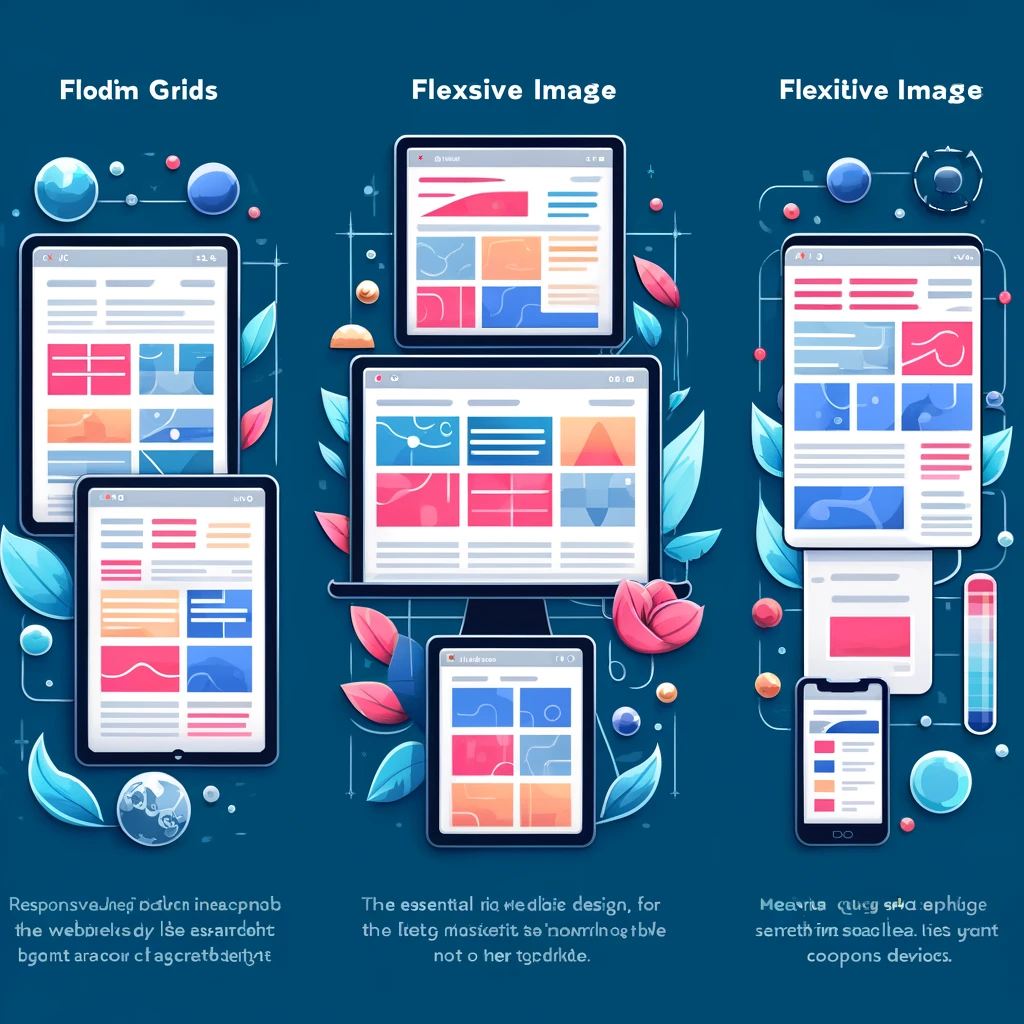Introduction

Hey Columbia business owners today we’ll cover some tips for responsive web design in 2024! As we steer towards 2024, there’s one tech term you really can’t afford to ignore: responsive web design. But what exactly is it? Simply put, responsive web design ensures your website looks and works great on any device, from desktops to smartphones. As more people whip out their mobiles to browse rather than sitting at computers, your website needs to adapt seamlessly.
Why does this matter? Well, a website that adjusts to fit any screen size not only offers a better browsing experience but also aligns with Google’s mobile-first indexing. This means Google predominantly uses the mobile version of the content for indexing and ranking. So, if your site isn’t friendly to mobile users, you might be missing out on a significant chunk of potential traffic and, ultimately, sales.
In this post, we’re diving deep into why a responsive website isn’t just a nice-to-have but a must-have in today’s digital landscape. We’ll cover the benefits, the essential elements, and even some local success stories to show you the real impact of going responsive. Stay tuned!
The Rise of Mobile Internet Usage

Hey, let’s talk about something that’s reshaping the way businesses think about their websites: the incredible rise of mobile internet usage. These days, it’s not uncommon to see people glued to their smartphones, whether they’re catching up on news, shopping, or just browsing. This shift isn’t just a trend; it’s the new norm.
Mobile Takes the Lead
Globally, mobile devices have overtaken desktops as the primary means for accessing the internet. Here in Columbia, it’s no different. More and more local users are reaching for their smartphones and tablets to find everything from the nearest coffee shop to the best local services.
Why Mobile-First Indexing Matters
This shift has prompted major changes in how search engines like Google rank websites. The introduction of mobile-first indexing means that Google now primarily uses the mobile version of content for indexing and ranking. This change emphasizes the importance of having a website that performs well on mobile devices—not just for user experience but also for SEO.
Understanding this mobile dominance is crucial for any business. It affects how you design your website, how you interact with customers, and ultimately, how you drive traffic and sales. If your site isn’t optimized for mobile, you’re not just behind the curve; you’re missing out on a huge potential audience.
Benefits of Responsive Web Design

Alright, let’s dig into why responsive web design is such a game-changer for businesses today. While it’s cool to have a website that looks good on all devices, the benefits go way beyond just aesthetics.
Improved User Experience
First up, user experience, or UX, is king in the digital realm. A responsive website automatically adjusts to fit the screen it’s viewed on, which means no more pinching and zooming to read content on a phone or tablet. This seamless transition across devices not only pleases your visitors but also keeps them on your site longer, reducing bounce rates.
SEO Advantages
From an SEO perspective, responsive design is a powerhouse. Since Google favors mobile-friendly websites, having a responsive design can significantly boost your search rankings. Plus, maintaining a single responsive site avoids the complications of having separate versions for desktop and mobile, which can dilute your SEO efforts and split your traffic.
Increased Conversion Rates
When users have a positive experience on your site with no hiccups or frustrations, they’re more likely to take action. Whether it’s signing up for a newsletter, making a purchase, or filling out a contact form, a responsive design can help smooth the path to conversion, leading to better business outcomes.
So, not only does responsive web design help capture and keep attention across all devices, it also supports your SEO strategy and enhances your ability to convert visitors into customers. It’s a win-win-win!
Key Elements of Responsive Design

Alright, now that we’ve covered the why, let’s dive into the how of responsive web design. Implementing a responsive design isn’t just about making things look good on a smaller screen; it involves a few key elements that ensure your website performs well on any device.
Fluid Grids
First up, fluid grids are crucial. Unlike fixed-width layouts that might look great on a desktop but break on smaller screens, fluid grids scale dynamically based on the screen size. This scaling is done through percentages, so each element adjusts proportionally, maintaining the design’s integrity and coherence no matter the device.
Flexible Images
Next, we have flexible images. Just as fluid grids adjust sizing for layout elements, flexible images resize themselves to fit within their containing elements. This prevents images from spilling over their containers or distorting the layout, ensuring that visuals are always displayed correctly.
Media Queries
Finally, the magic touch that brings it all together: media queries. These are clever bits of CSS that allow your website to apply different styles based on the characteristics of the device viewing it. Media queries can change styles based on device width, height, orientation, and even resolution, giving you the control to fine-tune how your site appears on various devices.
These elements are the building blocks of any responsive design, helping ensure that your website is not only functional but also aesthetically pleasing across all platforms.
Challenges and Solutions

Implementing responsive web design comes with its set of challenges, but don’t worry—where there’s a will, there’s a way! Let’s discuss some common hurdles businesses face when shifting to responsive design and how you can overcome them.
Handling Complex Layouts
Challenge: As beautiful and functional as your desktop design might be, translating that complexity into a mobile-friendly format isn’t always straightforward. Features like large tables, multi-column layouts, and detailed graphics can become unreadable or clunky on smaller screens.
Solution: Simplify and prioritize. Focus on the essential elements that need to be visible on smaller devices. Use collapsible menus and accordion tabs to keep the content accessible without overwhelming the user. This approach helps maintain a clean and navigable mobile experience.
Maintaining Speed and Performance
Challenge: More code and content mean more data to download, which can slow down your website on mobile devices where speed is critical.
Solution: Optimize everything. Compress images, minify CSS and JavaScript, and leverage browser caching. These steps help reduce load times and improve the overall performance of your website across devices.
Consistent User Experience Across Devices
Challenge: Ensuring that your website provides a consistent user experience across all devices can be daunting. Users expect a seamless interaction whether they are on a phone, tablet, or desktop.
Solution: Regular testing and updates. Use responsive design testing tools to see how your site looks and behaves on different devices. This continuous feedback loop allows you to make necessary adjustments and ensures your site remains user-friendly no matter the device.
Embracing these solutions not only addresses the challenges of responsive design but also enhances your website’s appeal and functionality, making it a pleasure to use for everyone.
Real-World Examples from Columbia

Now, let’s bring our discussion into the real world by looking at some Columbia-based businesses that have thrived by embracing responsive web design. Seeing these examples can help you visualize the potential benefits for your own business.
Example 1: DiscountDiaperWorld.com
Background: DiscountDiaperWorld.com, once struggling with an outdated site, turned to responsive design to improve their customer experience and capture a larger market share. Success Story: Post-redesign, the site saw a 40% increase in site traffic and a significant boost in conversion rates. The ease of navigating their product listings on any device led to an uptick in customer satisfaction and repeat purchases.
Example 2: Sambemixing.com
Background: Sambemixing.com, a local recording studio, needed a website that could showcase their services and facilities effectively across all devices. Success Story: The new responsive website not only enhanced their online booking rates by 35% but also expanded their client base beyond Columbia, reaching international customers seeking top-notch recording services.
Example 3: PCFoodPantry.com
Background: PCFoodPantry.com aimed to increase community engagement and streamline their donation processes. Success Story: With a responsive redesign, they experienced a 50% increase in volunteer sign-ups and a noticeable increase in donations, particularly from mobile users during community events and drives.
These stories from right here in Columbia demonstrate how responsive web design isn’t just about looking good—it’s about functionality, reaching broader audiences, and ultimately transforming business performance.
Conclusion

And there you have it! We’ve explored the ins and outs of responsive web design, from the key elements that make it work to real-life examples right here in Columbia that show just how impactful a well-executed responsive website can be. Whether it’s increasing sales, boosting traffic, or just providing a better user experience, the benefits are clear and compelling.
Embrace the Change
As Columbia moves further into 2024 responsive web design becomes more of a standard then a option, the shift towards mobile-first browsing isn’t just a temporary trend—it’s the new standard. Ensuring your website is responsive is no longer optional if you want to stay competitive and relevant in this digital age.
Action Steps
If your business hasn’t made the leap to responsive design, now’s the time. Consider the needs of your mobile users, and how enhancing their experience can improve your overall business metrics. Reach out to a web design professional who can help translate your business needs into a stunning and effective online presence.
Remember, a responsive website isn’t just about adapting to different screen sizes—it’s about opening your business to new possibilities and opportunities. Let’s make sure your Columbia business isn’t just surviving on the web but thriving in the digital landscape of 2024 and beyond by implementing responsive design!
If you have a local Columbia SC business need help with your responsive web design in 2024 click the link to schedule a free consultation.